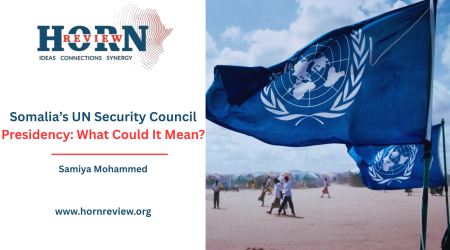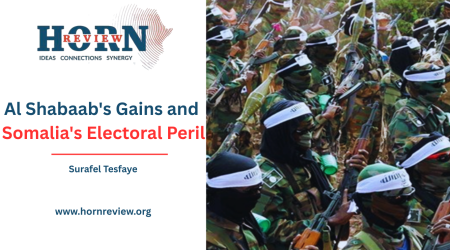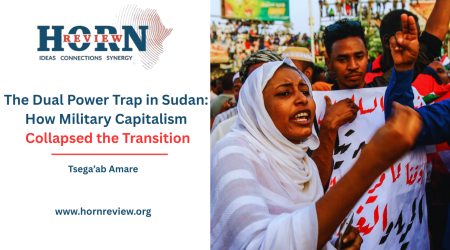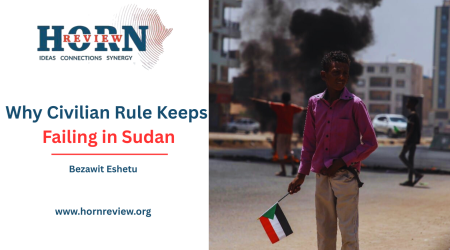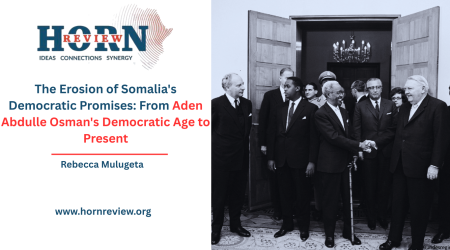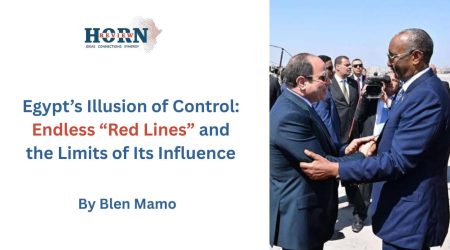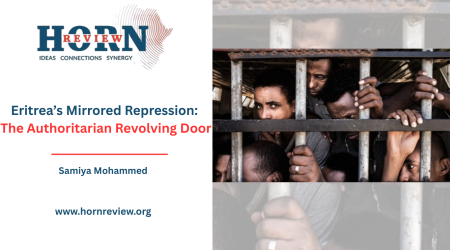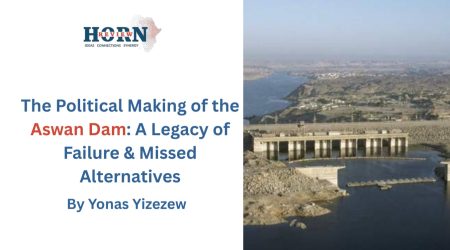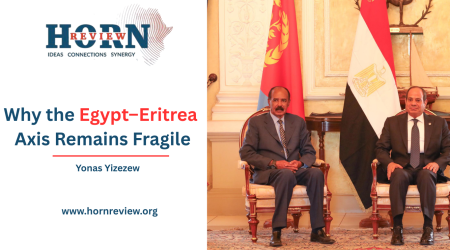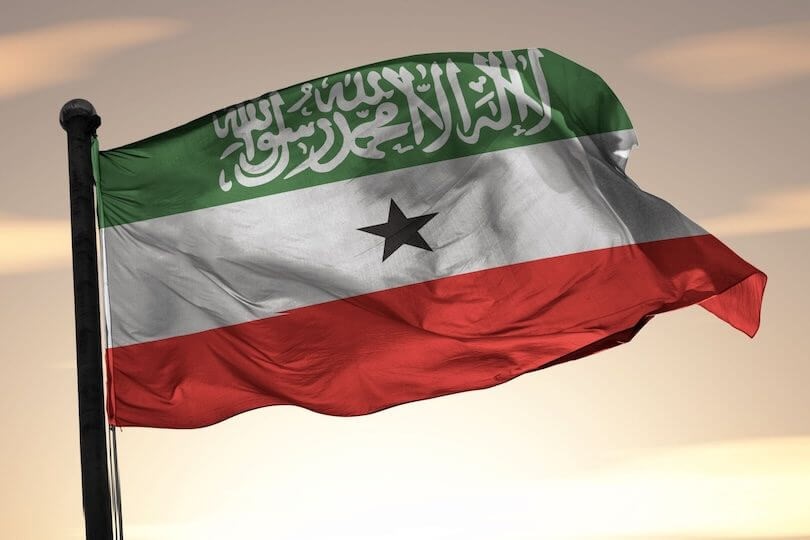
25
Aug
Historical and Strategic Considerations for Somaliland’s Statehood
By Abdiwadud Ashraf, Diplomat at Somaliland Embassy in Addis Ababa, Ethiopia and Surafel Tesfaye, Researcher at Horn Review
Ports are not just harbours; they are the entry points of empire, the exits of exile, and the place where nations test their sovereignty against the relentless tide of history. On the shores of the Gulf of Aden, the people of Somaliland have twice tasted that sovereignty in the 20th century: first in June 1960 as the independent State of Somaliland, and again in 1991, after surviving state collapse and mass atrocity. That is why the Upper House of Parliament, the Guurti, still reminds the world of that moment: Somaliland was never a dream waiting to be born, but a de jure state that chose a union with Somalia, only to see that union collapse under dictatorship and war.
To understand Somaliland’s present claim, one must first acknowledge its distinct past. The narrative of a unified Somali identity obscures a more complex history. The northwest territories, now Somaliland, were historically governed by the Isaaq Sultanate for centuries. In 1884, the British established the Protectorate of Somaliland through treaties with several clans, including the Isaaq, Issa, Gadabursi, and Warsangali. Simultaneously in the late 1880s, the south fell under Italian influence, with Rome establishing protectorates over the Sultanate of Hobyo (February 8) and the Majeerteen Sultanate (April 7) in 1889.
Though both regions bore the name “Somaliland,” they were administered separately for over seven decades by two different European powers. They developed unique administrative traditions, legal systems, and economic ties—one oriented toward the British Empire and Aden, the other toward Italy and the Indian Ocean. They were separate entities with separate capitals: Hargeisa and Mogadishu. Before colonial rule or in any part of history, the territories that now constitute Somaliland and Somalia were not united under a single, centralized authority. The notion of a pre-existing, unified Somali state is a historical fiction and is largely a product of the post-colonial era.
In 1960, both nations gained their independence. British Somaliland became a sovereign state on June 26th. Five days later, the other southern Somaliland became independent on July 1, 1960, and the northern territory then entered a voluntary union with the newly independent Italian Somaliland, forming the Republic of Somalia. This union, however, was fatally flawed from the outset. It was never legally ratified by a popular referendum, and the political landscape quickly became dominated by the south’s Somali Youth League (SYL), which marginalized northern interests.
The union’s collapse was precipitated by a military coup in 1969 led by Mohamed Siad Barre. His dictatorship unleashed a wave of political repression specifically targeting the northern clans. The regime’s disastrous invasion of Ethiopia triggered a catastrophic refugee and economic crisis in the north. This culminated in the late 1980s with a state-sponsored genocide against the Isaaq people. Cities like Hargeisa and Burao were systematically bombed, tens of thousands of civilians were massacred, and an estimated 200,000 perished, and hundreds of thousands fled to Ethiopia. It was one of the fastest and largest forced displacements in modern African history.
Therefore, Somaliland’s declaration of independence in 1991 was not an act of secession for privilege. It was an act of dissolution, a reclaiming of a sovereignty that had been voluntarily pooled and then brutally violated. It was an assertion of survival and a practical exercise of the right to self-determination enshrined in the UN Charter.
Since that day, Somaliland has undertaken a project of nation-building unparalleled in the region. It has risen from the rubble of war to establish a multi-party democracy, complete with a ratified constitution (Western-style constitution in 2001), regular elections, and a functioning government. It prints its own currency, maintains its security forces, and has fostered a market-oriented economy. It stands in stark contrast to the chronic instability and terrorism that have plagued the south.
For three decades, the world’s response has been a deafening silence. That silence was finally broken in January 2024, when Ethiopia signed a landmark Memorandum of Understanding (MoU) with Somaliland. This agreement, offering potential recognition in exchange for strategic port access, catapulted Somaliland from the shadows onto the world stage, forcing global capitals to acknowledge a question they had long ignored. And gave a clear message that Somaliland’s declared restoration of independence is not a breakaway territory but a state reclaiming what history had already granted.
This is not the first time Somaliland has reached out. History has a way of leaving letters unread. In 1999, Israeli President Ezer Weizman sent a personal letter to Somaliland’s late president, Mohamed Haji Ibrahim Egal, signalling a diplomatic opening that the world chose to overlook. In 2010, Israel’s Foreign Ministry spokesman publicly stated that Tel Aviv was ready to recognize Somaliland if formally approached. Again, in 2020, Somaliland publicly supported the Abraham Accords, Israel’s normalization with the UAE, a bold step for a nation still denied recognition. The message has been consistent: Somaliland is and has always been open to partnership with democracies and with countries like Israel and the United States.
Somaliland survived in the shadows and waited for a moment when the geopolitics of the Horn would make its existence impossible to ignore, and now the moment has arrived. And the strategic imperative for such partnerships is now undeniable. For Israel, Somaliland represents a potential gateway to the Red Sea, a stable ally to counter Houthis’ influence in Yemen, and a foothold at the chokepoint of one of the world’s most vital waterways. To ignore Somaliland now would be to repeat the mistakes of 1999, missing an ally in a region where friends are rare and enemies multiply.
For the United States, the contrast is even starker. Washington has poured billions into the fragile, often corrupt, central government in Mogadishu with little to show for it. Meanwhile, it ignores a stable, democratic, and pro-Western partner that actively fights terrorism and controls 850 kilometres of pirate-free coastline. Somaliland is home to the former Berbera airbase, East Africa’s longest runway, a former NASA emergency site capable of hosting the heaviest U.S. military aircraft. Recognizing Somaliland would reduce U.S. reliance on Djibouti at Camp Lemmonier, secure a critical stretch of the Gulf of Aden (a corridor for over $1 trillion in annual commerce), and provide a durable base for intelligence and counterterrorism operations against threats like Al-Shabaab and the Houthis and mainly to counterbalance against rivals in Mogadishu and beyond.
The path forward requires respect, not exploitation. A recent proposal to resettle refugees in Somaliland was rightly rejected by Hargeisa as a short-sighted bargain that compromised its political legitimacy for another nation’s problem, and the offer overlooked the crucial long-term benefit it offers. True partnership means recognizing Somaliland’s sovereignty and engaging with it on equal terms for mutual economic and strategic benefit, including access to unexploited mineral reserves.
For Somaliland, the timing could not have been sharper. By rejecting the refugee deal, it proved its independence. By securing Ethiopia’s MoU, it gained regional leverage. Together, these two moves shifted the narrative from “unrecognized territory” to “emerging state with strategic choices.” And in that shift lies a new opportunity for Israel, for the United States, and for any nation seeking reliable allies at the Red Sea crossroads.
Somaliland did not wait for recognition to survive. It rose from genocide, built democracy from rubble, and stood loyal to the United States while being ignored. It extended a hand to Israel long before normalization was fashionable. To continue denying recognition is to reward failure in Mogadishu and punish resilience in Hargeisa. The time has come for Washington and Tel Aviv to see Somaliland not as a forgotten state but as a strategic partner, one that has already proved it can build from nothing and one that deserves to stand on its terms.
References
Birnbach, Ariella, and Benjamin Fogel. 2025. “Why the Trump Administration Should Recognize Somaliland.” The National Interest, July 1, 2025.
Heritage Foundation. 2021. “The U.S. Should Recognize Somaliland.” Heritage Explains.
Republic of Somaliland. n.d. “Somaliland’s Forgotten Genocide.” Republic of Somaliland.
MacMillan Center, Genocide Studies Program, Yale University. n.d. “Somalia (Isaaq Genocide).” MacMillan Center – Genocide Studies Program.
Yarom, Ariel. 2025. “Gateways to the Red Sea: The Case for Israel–Somaliland Normalization.” MENASource.

